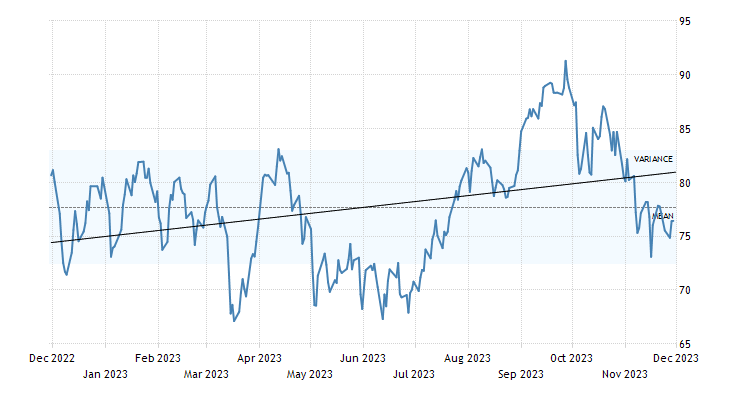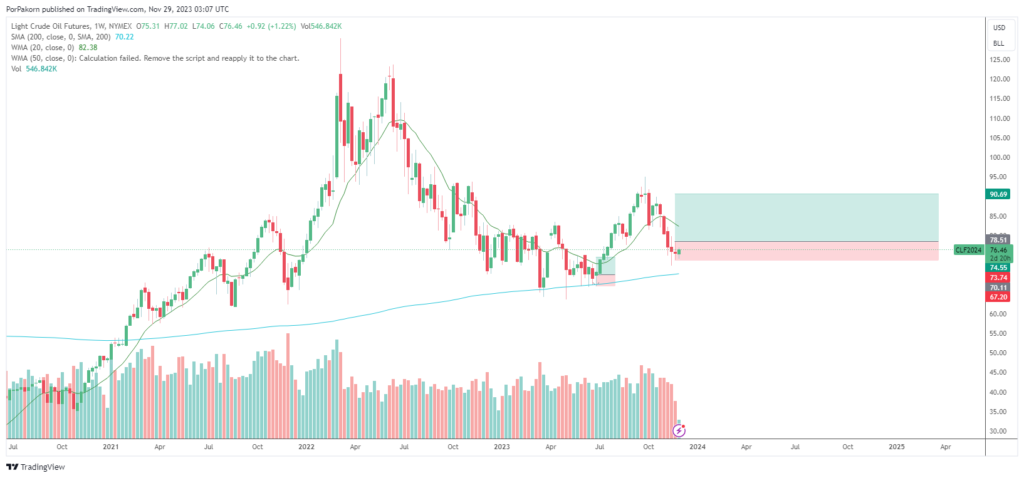Introduction
Amidst the dynamic world of oil markets, the WTI crude futures hovered resiliently around $76.5 per barrel on Wednesday, displaying a steadfast 2.1% gain from the prior session. Investors, poised on the edge, awaited the crucial OPEC+ meeting, a pivotal event that will shape production policies for the upcoming year, 2024. Saudi Arabia, taking the reins, advocated for production quota reductions among its fellow members, emphasizing the critical need to stabilize the tumultuous markets. However, consensus eluded the group, and as of yet, no definitive resolution or agreement has been forged. The meeting’s initial schedule for November 26 was thwarted by discord over output quotas involving African producers Nigeria and Angola, ultimately necessitating a postponement to November 30.

Intriguingly, the oil price trajectory found support from unexpected quarters as a tempest unfurled across the Black Sea region. This disruptive storm wreaked havoc on oil exports originating from Kazakhstan and Russia, triggering apprehensions of imminent supply constraints. This unpredicted turn further fueled concerns about the tightening global oil supply. Concurrently, across the Atlantic, industry data revealed a decline of 817,000 barrels in US crude inventories for the previous week, undershooting predictions that anticipated a substantial drawdown of 2 million barrels.
The fluctuating landscape of oil prices presents a myriad of challenges and opportunities for investors and market participants alike. Understanding the complex interplay of geopolitical factors, production policies, and unexpected natural occurrences becomes quintessential in navigating this volatile terrain. As Saudi Arabia’s proactive stance in urging production cuts highlights, the decisions made within the OPEC+ meetings wield substantial influence over the global oil price trajectory. The intricate web of relationships among member countries, compounded by external variables, underscores the fragility of oil markets and the need for strategic foresight.
In the midst of such unpredictability, prudent advice emerges for stakeholders in the oil market. Diversification of investment portfolios, meticulous risk assessment, and an astute understanding of market dynamics become imperative. Keeping a keen eye on geopolitical tensions, supply-demand imbalances, and regulatory changes within the oil-producing nations enables a proactive stance in mitigating risks and capitalizing on emerging opportunities. Moreover, leveraging technological advancements and sustainable energy initiatives presents a potential avenue for long-term resilience amid the volatile oil price landscape.

Conclusion
In essence, the ever-evolving narrative of oil prices weaves a tale of constant flux and unpredictability, demanding astute observation, strategic decision-making, and adaptability from all stakeholders. The OPEC+ meetings stand as a pivotal axis, wielding substantial influence over global oil price trajectories. Yet, the intricate dance between geopolitical events, market dynamics, and unforeseen disruptions necessitates a holistic approach towards understanding and navigating the complexities of the oil market.





